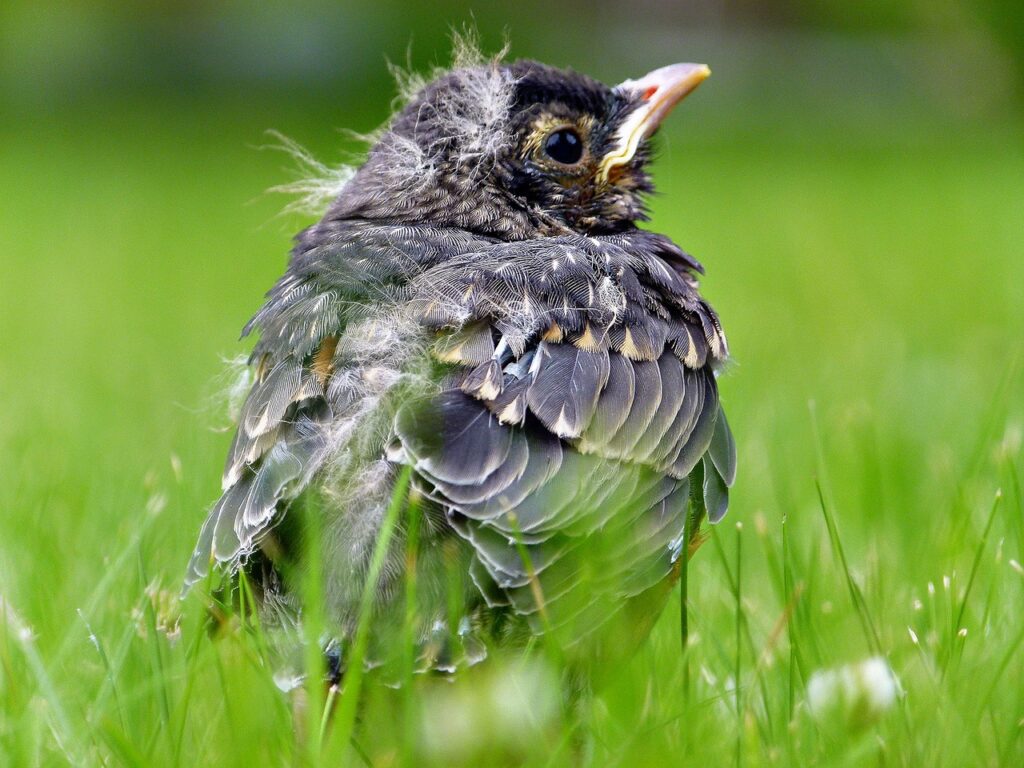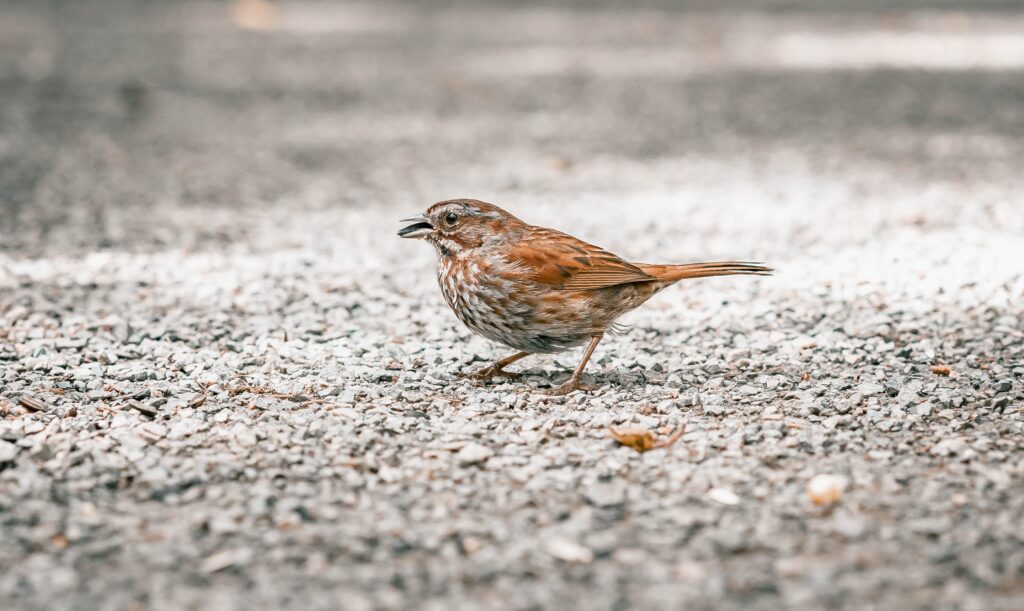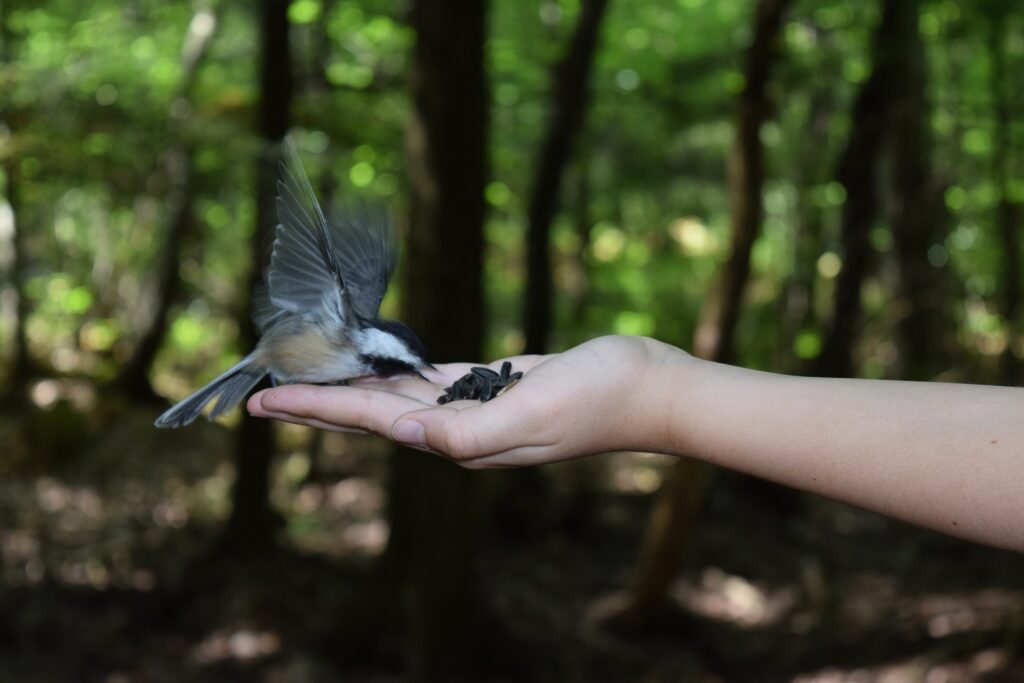Have you found an injured or sick bird? Turns out that there are some important things to consider before you step in to help. Here are top guidelines from wildlife experts and a bit about the law regarding wildlife.
Is it a Baby Bird?

First, it’s important to determine if the bird is in distress, or if it’s simply a fledgling trying out its new feathers. Fledglings that are practicing flying may wobble and stumble a bit, and make several attempts to fly. This behavior could be misconstrued as a bird that’s injured or needs help in some way, but it’s actually quite normal and healthy for a fledgling to act this way.
On the other hand, hatchlings are younger birds who aren’t ready to live outside the nest just yet, and may need some assistance. For more information, please see the following blog posts:
- I Found an Orphaned Baby Bird, What Do I Do?
- What to Do When You Find a Baby Bird on the Ground
- Found a Baby Bird? Here’s What to Do (Infographic)
Does the Bird Actually Need Help?

As animal and nature lovers, it can be tempting to jump in and help. But as environmental stewards, it’s important to know when our help is needed, and when it may cause more harm than good.
With this in mind, many wildlife experts recommend the “leave it alone” approach with wildlife. This hands-off approach considers many factors. For one, although a bird is sick, it’s still wild, and can carry disease. And, more importantly, it’s illegal to disturb wildlife or keep a bird, injured or not, in your care.
Determining if a bird is sick or injured
Of course, there is a responsible way to help a bird in need. But first, you must determine if the bird is sick or injured. Without touching the bird, and keeping a bit of distance, look for these signs:
- Cuts or wounds
- Limping or moving irregularly
- Matted or missing feathers
- Irregular breathing
- Drooping or injured wings
- Not flying away when approached
How to Help a Sick or Injured Bird

What you’ll need
- Gloves
- Cardboard box or container with air holes and lid
- Soft materials (towels, clothing, fabric, etc., but NOT terry cloth or cloth with loops)
- Contact info for your local wildlife rehabilitator
What to do
- Slowly and quietly approach the bird.
- With gloves on, gently pick up the bird. You can use both hands, and/or drape a soft towel or pillowcase over the bird if you need to.
- Place the bird in a box or container lined with soft materials.
- Take photos (no flash) of the bird to share with the wildlife rehabilitator.
- Place the lid (with airholes) over the box.
- Call your local wildlife rehabilitator immediately.
- Keep the box in a dark, warm, and quiet place away from people and pets.
DON’T squeeze or put pressure on the bird when handling it.
DON’T talk or make loud noises; it’s already a stressful situation for the bird! Even a low, soft voice will cause more stress.
DON’T give the bird water or food, unless directed by a wildlife rehabilitator.
DON’T let children touch or handle the bird; they carry disease, and improper handling of the bird—no matter how softly—can hurt it further.
Transporting a Sick or Injured Bird

If a wildlife rehabilitator asks you to transport the sick or injured bird—or if you can’t get in touch with a rehabilitator and wish to transport it to an animal hospital or other care facility—here are the steps:
- Gently place the box with the bird in the car, away from direct sunlight and breezes.
- Don’t let young children hold or sit near the box, to avoid jostling the box and injuring the bird further.
- Keep the air conditioning off (unless the temp is over 90 degrees) and music off or on low.
- When you get there, provide the rehabilitator with helpful information, such as where you found the bird, and (if you witnessed it) any details on how the bird was injured.
Let’s “Nurture Our Nature”

At Chirp, our “nurture our nature” motto is more than a mission statement. It’s the way we strive every day to connect with nature and like-minded nature lovers like you. It involves:
Observing deeply by learning more about our natural world.
Supporting thoughtfully by engaging in eco-friendly habits to support local wildlife and the environment.
Sharing lovingly by building stronger communities and healthier natural habitats.
More Ways to Help Wild Birds

Learn
- Read about wild birds on the Chirp blog.
- Watch educational and how-to bird videos on the Chirp YouTube channel.
- Join us for a live, guided Wild Bird Walk.
- Shop Chirp for locally made wild bird products (and support conservation efforts with each sale).
Act
- Feed wild birds in winter, and year-round.
- Fill bird feeders with high-quality bird food.
- Keep your bird feeders clean.
- Plant native and bird-friendly plants.
- Plant a hummingbird garden.
- Use poison-free pest control.
- Prevent window strikes.
- Keep your cats indoors.
- Teach your kids to take care of the environment.
Support
- National Audubon Society
- U.S. Fish & Wildlife Service
- National Wildlife Federation
- World Wildlife Fund
- Animal Welfare Institute
- Endangered Species Coalition
- Defenders of Wildlife
- Wildlife Conservation Society
- International Union for Conservation of Nature
- American Bird Conservancy
- Partners in Flight
- BirdLife International
Bird in shoebox photo courtesy of Duval Audubon Society.


